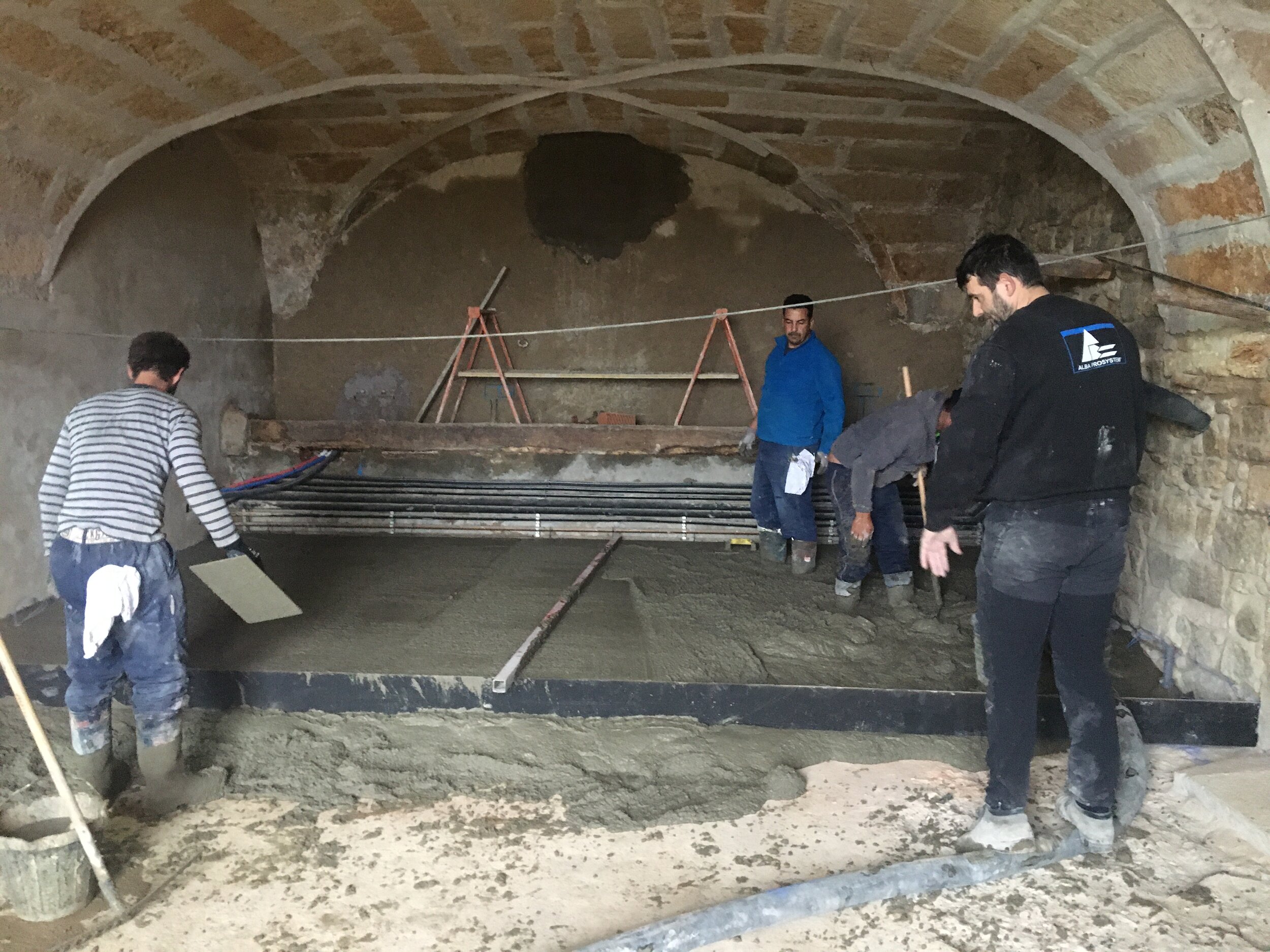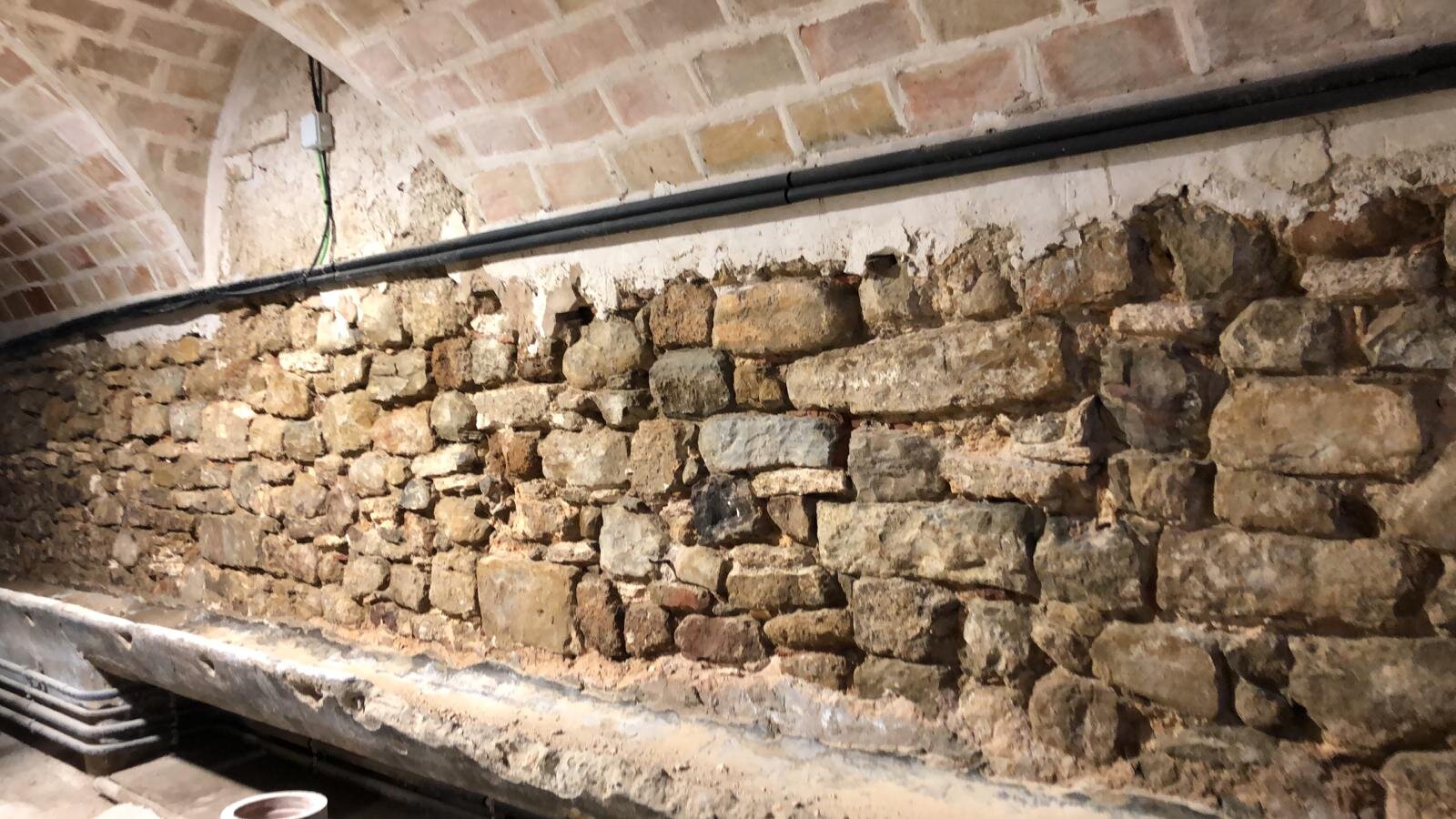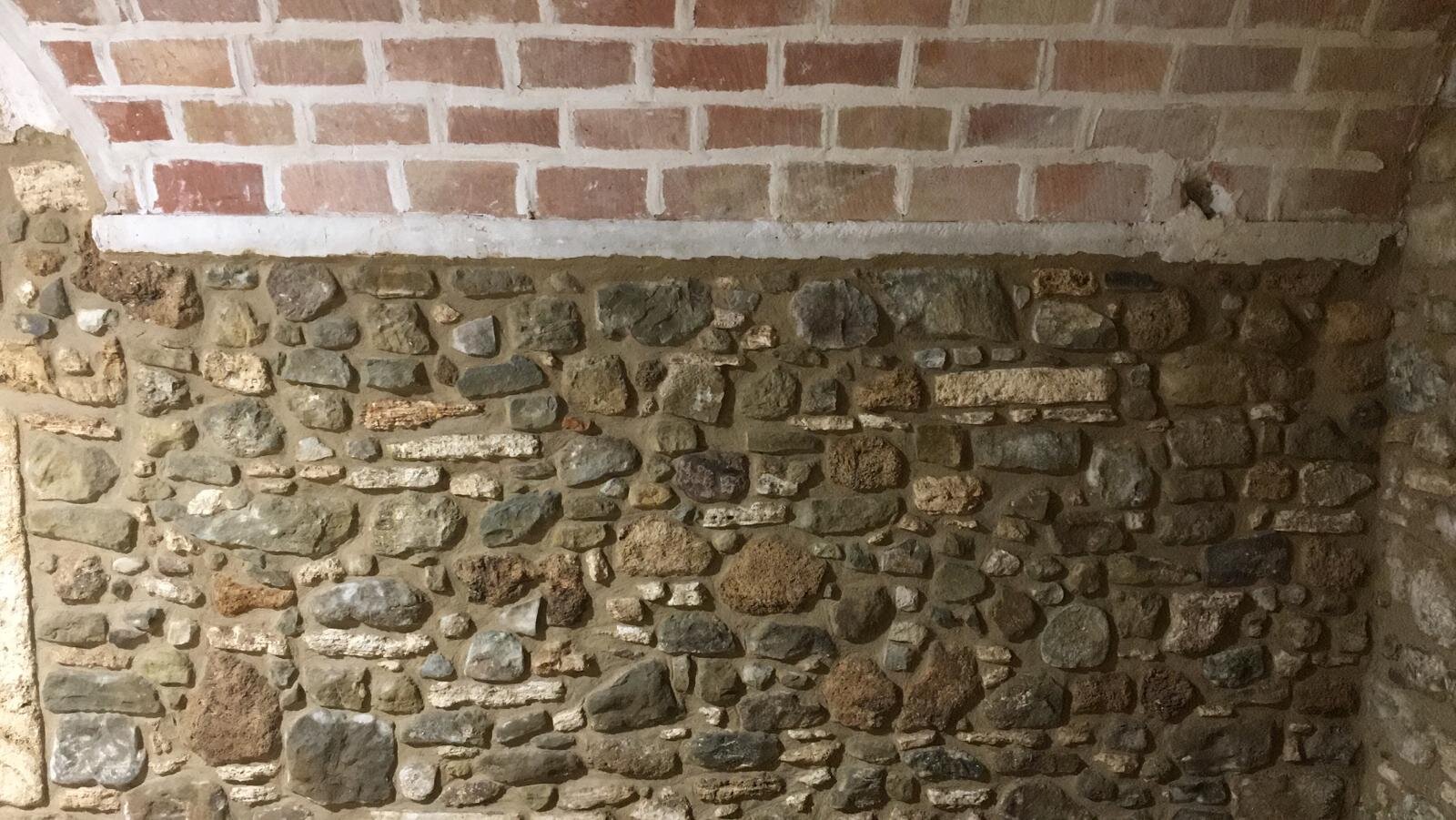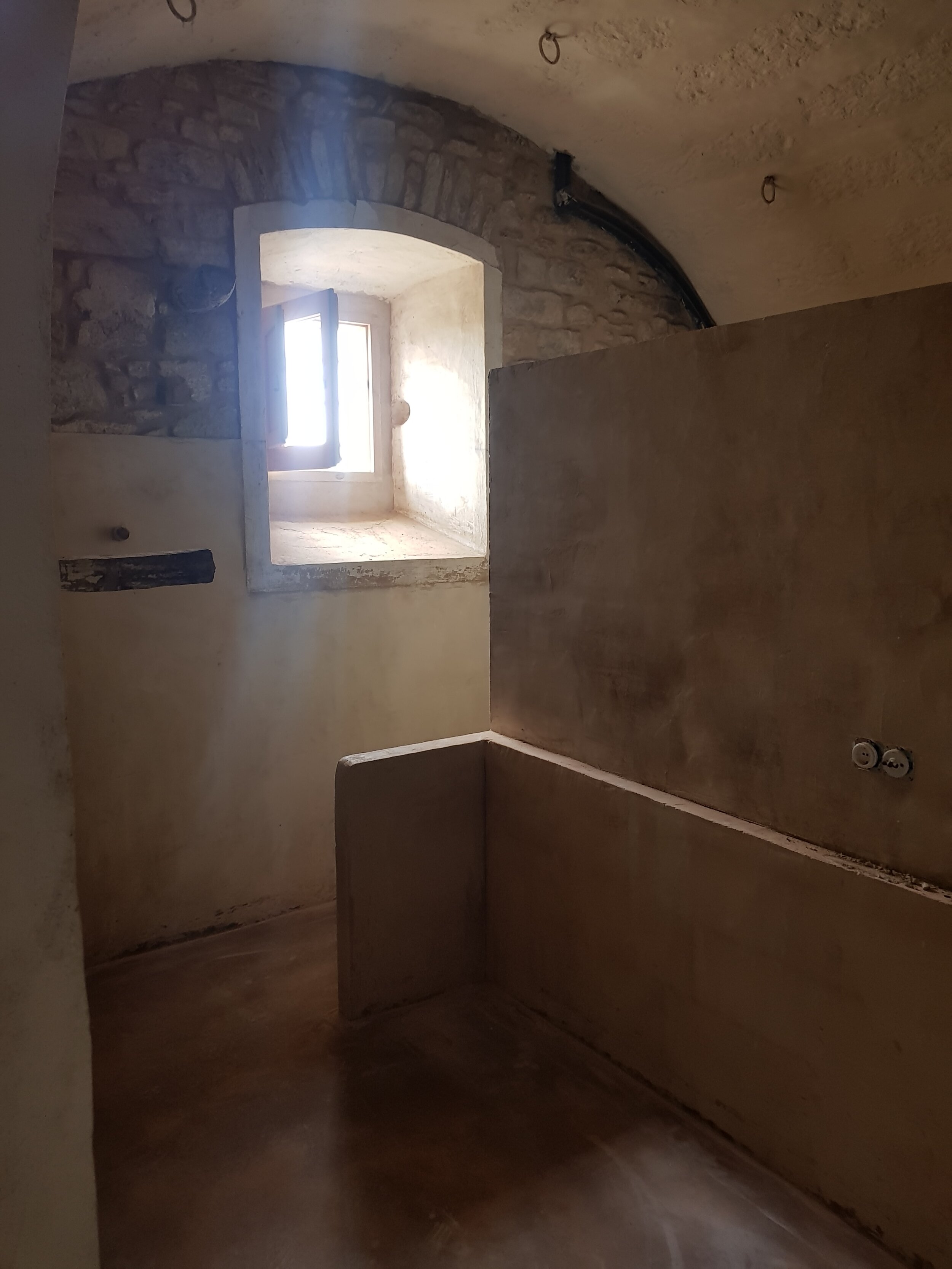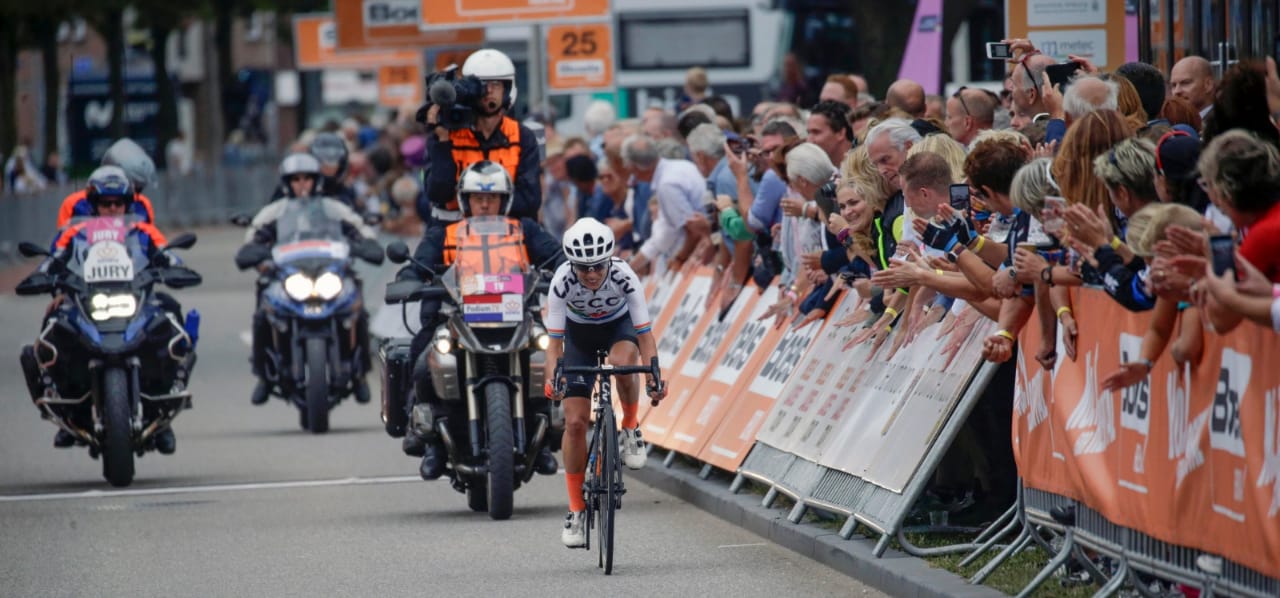One Year On: Lessons from a Broken Back
One year after a high-speed crash left me with a burst vertebra and an uncertain future, I’m reflecting not on the pain, but on the process — the quiet, determined journey of healing, adapting, and rediscovering who I am beyond the results. This isn’t just a story about injury and recovery; it’s about transformation, patience, and what it means to keep showing up — day by day, stage by stage.
Photo credit: Olivia Hugh
I don’t usually keep count. I’m not one to mark the anniversary of a crash or dwell on moments of misfortune. It’s never been my way to adopt a victim mentality — I’ve always believed in moving forward, learning from the past, and using adversity as fuel. But today, one year on from a crash that could have changed everything, I feel it's worth pausing to reflect. Not to relive the pain, but to acknowledge the process — and the growth that came from it.
It was Stage 1 of the Volta Catalunya. A high-speed sprint finish. Just a few hundred meters from the line, a rider slid out in front of me. I had nowhere to go. The crash happened in an instant. There was no time to think, no space to react. I took the initial impact on my head, and then my back folded violently beneath me. That force is what caused the burst fracture.
The moment I came to — lying on the road — I knew something was terribly wrong.
The diagnosis: a burst fracture of my T10 vertebra. An unstable injury, with a bone fragment dangerously close to my spinal cord. The kind of injury that usually requires surgery. But thanks to an incredible medical team, we opted for a conservative approach — no operation, just time, patience, and a very strict back brace. It was the right call, but it came with uncertainty, fear, and many long nights lying still, hoping the bone wouldn’t shift, praying the nerves would stay untouched.
For the first two weeks, I didn’t take the brace off. Not even to sleep. I was terrified of making one wrong move. I broke the process into phases. First, survive those two weeks. Then, gradually start moving again. I vomited constantly the first few days — a side effect of the trauma to my spine and nervous system. One of those days, I lay in bed and thought, this is it. But I made it through.
And then, in true me fashion, I was back on the Tacx trainer on Zwift. Back brace on, mind focused, eyes on the Olympic Games and the Tour de France Femmes. It was a fine line between risk and resilience — between pushing forward and holding back. But I knew that if I could control my environment, I could take back some power. So I controlled what I could: my mindset, my movement, my approach.
I’m no stranger to injury. Perhaps the most formative one came long before I turned pro — in my final year of school, during a horse riding accident. I wasn’t wearing a helmet. I hit my head on a concrete block and was placed in an induced coma for ten days. Doctors said I’d never finish school. That I’d never be the same again. That I’d be brain damaged. But I recovered in three months, finished school with seven distinctions, and went on to study chemical engineering. That experience shaped me — not just physically, but mentally. It taught me that adversity is not the end of the story; it’s often the beginning of a new one.
Throughout my career, I’ve faced setbacks — broken collarbones, a fractured ilium in a violent time trial crash in 2016 — each time, learning that recovery isn’t linear, and that patience is often the most powerful kind of strength.
This broken back, though — it’s been different. Longer. Deeper. It’s forced me not only to recover physically, but to reconfigure how I relate to my body, my goals, and the athlete I strive to be.
The bone has now fully remodeled. It’s not the shape it once was — no longer a square but a wedge. My body has adapted to accommodate it, and that’s been its own journey: managing spasms, strengthening the surrounding muscles, and re-learning what “normal” feels like.
But let me be clear: I haven’t accepted that I won’t be the rider I was before. In fact, I haven’t yet had the chance to fully focus on the marginal gains again — on performance in its purest sense. I believe I could come back stronger. Smarter. More complete.
What I have done is learned how to adapt. How to contribute in new ways. How to reinvent myself in the face of challenge. Because that’s what life — and a long career — is all about. Maybe I’m not always the rider chasing results at the front, but I’ve grown into a road captain, a mentor, a leader. I’ve learned to bring value in other ways, and that too is something I’m proud of.
If there’s one overarching lesson this year has taught me, it’s that there is no such thing as instant success. We live in a world obsessed with quick results — with winning now, with bouncing back fast. But real transformation doesn’t happen that way. True growth — in sport, in life, in ourselves — takes time. It’s a process.
And in many ways, it mirrors a Grand Tour. You don’t win it in a day. You win it by showing up — stage after stage — navigating the highs and lows, weathering the crashes, adjusting when plans fall apart, and always keeping your eyes on the bigger picture.
So no, I don’t celebrate crash anniversaries. But today, I acknowledge the journey. And I recommit — to the process, to the pursuit of excellence, to becoming the best version of myself. Maybe it won’t look exactly like it did before. Maybe it will look even better.
The fire still burns. I’m still here. And I’m still moving forward.
The Women’s Tour of Britain: A Turning Point in the Story of Women’s Cycling
As I watched the Women’s Tour of Britain from my Zwift session at altitude, I was flooded with memories — of podium moments, of quiet years when we raced in the shadows, and of the incredible turning point this race represented for women’s cycling. From community-backed stages to the rise of the Tour de France Femmes, this is a story of how one race helped change everything.
As I sit on my Tacx trainer, spinning out a session on Zwift while at altitude, I’ve been watching the Women’s Tour of Britain unfold — and I can’t help but reflect on just how important this race has been to the evolution of women’s cycling. In many ways, it was the first event that showed us what was possible when our sport was treated with the respect and professionalism it deserves. It wasn’t just a race; it was a statement — and a catalyst for change.
For much of my early career, women’s racing felt like a well-kept secret. We poured our hearts into races that barely made it onto the radar — no live TV, only the occasional highlights package uploaded hours later, if at all. Following the sport meant refreshing Twitter feeds or trawling obscure websites. It often felt like the only people who truly followed women’s cycling were those with a direct connection to a female rider.
Even prestigious events like the Giro d’Italia Femminile were organised and marketed more like local races than elite sporting events. There was little investment in publicity, and no real strategy to draw local crowds, let alone a broader audience. We often felt like we were on our own — doing it for the love of the sport, yes, but without the infrastructure to support a real professional career path.
The Women’s Tour of Britain changed that. Introduced in 2014 by SweetSpot, it was one of the first races to take women’s cycling seriously — not just as sport, but as a product worth building, marketing, and sharing with the world. The same organisation that ran the Men’s Tour of Britain brought the same level of professionalism to the women’s race. And it showed.
Towns and communities got involved from the start, bidding to host stages, launching local campaigns, and lining the streets with schoolchildren waving flags. The organisation, the marketing, the sense of occasion — it felt like we had finally arrived. Even in the early years, when TV coverage was limited to highlight shows, the professionalism and visibility were game-changing. It was the first time I saw, in practice, what a career in this sport could look like.
Personally, finishing second overall in the 2016 edition of the Women’s Tour remains one of the proudest moments of my career. It was a turning point that gave me the confidence to keep pushing — to believe that this dream could become a sustainable, professional reality.
Of course, the COVID-19 pandemic disrupted everything. But in a strange and unexpected way, it also acted as a springboard for women’s cycling. With traditional racing halted, Zwift became the epicentre of the sport. And when ASO approached Zwift to host a virtual Tour de France in 2020, Zwift only agreed on the condition that the women’s event be treated with complete parity — equal stages, equal coverage, equal opportunity.
It was the first time the women’s peloton raced under the Tour de France name. Before that, we had La Course — a one-day event that always felt like a token offering. It began as a criterium on the Champs-Élysées, and while it later included more challenging parcours, it never received the same marketing or coverage as the men’s race.
But during that virtual Tour de France, broadcast around the world, people watched. People cared. The popularity and engagement proved what we had always known — that women’s cycling had a real audience, a real business case, and a bright future. That moment opened the door to the rebirth of the Tour de France Femmes avec Zwift, and it changed the trajectory of the sport.
Still, none of that progress would have been possible without the early pioneers. The Women’s Tour of Britain was a trailblazer — a race that led by example and showed what women’s cycling could become with the right support and belief behind it.
Which is why it’s so heartening to see the race return this year after a two-year hiatus. Sadly, SweetSpot — the original organisers who did so much to elevate this race — went into liquidation amidst the economic downturn. The future of the Women’s Tour was uncertain. But thanks to British Cycling, who recognised its value and stepped in to ensure its survival, the race is back. That act alone speaks volumes about the growing recognition of women’s cycling as something worth investing in and protecting.
And this year’s edition has already been full of emotion. My team, AG Insurance–Soudal, has been racing brilliantly, and it was great to see my teammate Kim Le Court take a fantastic stage victory in the opening stage yesterday. Unfortunately, bad luck struck during today’s stage and Kim was involved in a crash, meaning she is no longer in the leader’s jersey. But her win remains a huge moment — both for her and for the team — and a reminder of just how far we’ve come.
So here’s to the Women’s Tour of Britain. To the visionaries at SweetSpot who created it, and to British Cycling for ensuring it still has a future. To the towns, schools, volunteers, and fans who lined the streets and believed in us when it still felt like we were racing in the shadows.
And here’s to the riders — past and present — who fought for this sport when few were watching. We ride on your shoulders. And we ride with purpose, with pride, and with deep, deep gratitude.
Rocacorba Cycling Covid-19 Policy
Open Space
We are situated on the estate of Can Campolier in a remote area on the outskirts of the town of Banyoles, near Girona. Our estate is centred around the main villa, but consists of three separate buildings spanning acres of open space. Each property has its own private outdoor area.
For the safety of our guests and staff we have implemented the following protocol:
General Guidelines
Anyone displaying symptoms of Covid-19 will be denied check-in, please do not travel if you feel unwell.
Your room and bathroom will be solely your domain, nobody else from outside of your party will enter during your stay.
Use of the communal outdoor spaces such as the courtyard, gardens and field areas will be determined by local regulations, however social distancing measures must be adhered to.
A distance of 2m will be kept between staff and guests at all times.
Check-in
We will operate a no-contact policy when checking in and out. Keys will be made available at your villa upon arrival and communication will be via email or instant message.
Bathrooms
Each room has a private bathroom.
Travelling
We ask that everyone respects the current government restrictions on travel within provinces, regions, and countries.
Cleaning Protocol
We comply to the highest standards of cleanliness and hygiene at all times and have applied additional measures to comply with Covid-19 requirements.
If you require any further information please contact us via email on info@rocacorbacycling.cc. To download this document click here.
First Look At Our All New Bike Area
Just over 12 months ago we took the high-pressure hose to the floor in the downstairs vaults. As the concrete started to emerge so did our ideas for what those rooms could become. We wanted a visually stunning but also practical bike area where we could store and work on bikes but which also doubled as a comfortable place for guests to shower, change, and sit on the sofa with a coffee after a ride.
The end result is better than we could have imagined.
Transformation Underway
Can Campolier is a bit like an archeologist dig: we slowly uncover the past and discover new potential as we make our way through the house. We always had the idea to develop the downstairs area but it wasn’t until we took a high pressure hose to the floor and walls that we really saw all that it could be.
Originally, the downstairs was where some of the livestock were housed and cared for. When we moved in, there was even still old hay piled up in the corners. It was dusty, dark, and, frankly, we had other areas to focus on. But as the business expanded, we needed more space. Slowly, the downstairs became storage and then, over time, it was clear it had to be cleaned up and made into a proper usable space.
We started to clean, chip away at the disintegrating concrete, and then the vision was really clear. We called in the contractors. In a few weeks the team of 8 workers had transformed the area and revealed beautiful arched ceilings, exposed stone walls, and a crystal clear vision. It would be a space that was all about the bike. Of course, our bike workshop and rental bikes would be stored there but now it would also be a space for riders with shower facilities, seating areas to enjoy a coffee or two, and space to get ready to ride.
Plus, we all kinda liked that the foundation of the house is the foundation of our business: bikes.
Although it has moved on from cattle to bikes, as with the rest of Can Campolier, we will preserve the authentic feel of the space. Our top of the line carbon Cervelos and 3Ts will be perfectly at home next to the old brick but we hope bringing the space back into use will also tie a little of our cycling DNA into Can Campolier.
Work is still ongoing with but we look forward to sharing coffees and ride stories in our new cycling zone very soon.
How to Tackle Rocacorba
“If there is one thing we know, it’s Rocacorba”
Rocacorba is more than our name. The Rocacorba mountain is one of Girona’s best-known and toughest cycling climbs. It was made famous by its popularity among the local pros. Close enough to Girona (but only 1.5km from our doorstep) with challenging slopes, it became the perfect climb for the pro riders to test their form. Even leading up to the grand tours, riders including Tour winner Bradley Wiggins and Giro winner Ryder Hesjedal were known to train on the climb. With years of pro riders trying to break the magical 30 minute mark (~40 for the women), the Strava segment was and still is hotly contested and not just between the pro riders. It’s the perfect climb for any rider to test themselves and see how they stack up against some of the best in the world and a must-do climb for every cyclist in the Girona area.
Years before we ever started Rocacorba Cycling, we were all riding on the slopes of the locally famous climb week after week, year after year. Given our combined history with the climb and location of Can Campolier, it was only natural when we started the business that we would name it “Rocacorba Cycling”. So, if there is one thing we know, it’s Rocacorba.
We know every detail of our namesake climb: every corner, every gradient change, where to save and where to spend energy, and every horse and donkey along the way. Of course, Ashleigh is also the presiding QOM so we also have all her tips and secrets to help you get a personal best or tackle the climb for the first time.
The Start
The Rocacorba climb might be 1.5km from our doorstep but the first thing we suggest is a good warm up! A quick roll around the lake will wake the legs up by the time you arrive to the start of the climb which is officially just after the bridge. Make sure you have fluids as there is no place to get water on the climb.
The 9.7km climb has an average gradient of 7%. On paper, that’s pretty straightforward but in reality the climb isn’t that simple. The start is the easiest part with shallower gradients and fools way too many riders into going out too hard. Pacing is most the most critical at this point so hold back! As Ash warns, “if you want your best time, don’t get excited too soon or you will pay for it at the top”.
When you reach the more open fields (hello mini horses!), you’re just arriving to the first of two flat/downhill sections. Use the 500m to spin out your legs because the second half of the climb is much harder.
The Hardest Part
The next two kilometres are the toughest part of the climb with the average gradient at 10%. There is no shade and no respite, even on the outside lines of the corners, only hard and harder.
The key here is to be steady. Find a powerful rhythm and stay there. Keep an eye out to the left because you’ll be able to catch a glimpse of the summit for the first time, demarcated by the cellular towers at the top.
The road will feel like it’s levelling out and then you’ll be granted the welcome gift of the second 500m of downhill. Again, use it to spin out your legs and prepare for the final section up to the summit.
The Final Push
The final 1.5km is still steep with an average gradient of 8%. With 8.5km in the legs, it bites but with views on the right of the Pyrenees and the summit so-close, you can start burning the end of your matches. Don’t be fooled by the green and white “Rocacorba” sign on the right, the summit is still 500m to go!
Make it to the hairpin past the sign and there is only 300m left. There is a white line across the road to mark the official finish so put your head down and empty the tank. It’s literally downhill home so don’t save anything now!
The Glory
Once at the top, take the mandatory photo with the big green Rocacorba sign. Have a seat on the paragliding launch and enjoy the well-deserved beautiful views of Girona and the Costa Brava. After you carefully cycle back down, finish your pilgrimage with a celebratory coffee and cake at the official Rocacorba Food Truck right at Can Campolier—you’ve earned it. And maybe have a quick check on Strava too…
Really want to get a PB? Ride it with one of our guides for a one-on-one coached climbing experience.
If you are on a gravel bike, or on foot, head down the dirt road to the Rocacorba Sanctuary
Full Circle
Silvie, Wouter, Ashleigh and Carl outside the Rocacorba Cycling front door.
I didn’t even realise it was happening but there it was: a Dutch couple I’d met at the Boels Rental Women’s Tour in September last year at my doorstep. I couldn’t place them right away, but I knew I knew them. They reminded me; after I had won the QOM jersey on stage one, we met and I gave them my podium flowers. Now, here they were in Spain, at Rocacorba Cycling, and making our vision into a reality. Let me explain…
When we first started Rocacorba Cycling, I had my racing life and my business life. When we opened our doors, it was about more than being a hotel and cycling destination. Rocacorba Cycling was and is part of a big dream to bring the parts of cycling together, to marry the right hand of cycling passion with the left hand of sustainability. We wanted a place where everything could viably function together so there were no barriers between cyclists, cycling stakeholders, and everyone in between—a positive feedback loop, so to speak.
That positive feedback was loud and clear when Wouter and Silvie came to stay. We’ve had fans become guests, guests become friends, and friends become family over the years but having fans come to stay because I had connected with them in person at a race was something special.
Racing life and business life have really become symbiotic and that alignment feels so organic and fulfilling. Seeing that connection grow and gain momentum is motivating and uplifting—we hope for our guests also. We aren’t just a hotel. We aren’t just a cycling destination. There’s so much more to experience and feel, not only at Rocacorba Cycling, but beyond our ancient stone courtyard.
We welcome everyone to join us in 2020 whether it’s following my races and preparation for the Tokyo Olympics, coming for a cycling holiday, staying at the hotel and enjoying Catalunya, or connecting with us on social media and being part of our journey from afar.
From our family to yours, best wishes and we hope to see you in 2020!
Lucky Turn
So far this season, I can’t say things have gone well. I haven’t had the race results I expected and it wasn’t for lack of form. I’ve put the work in, seen great improvements in training, and shown up to races with the legs to win; but, I’ve had bad luck race after race. Just recently, I crashed in Plouay, at the Boels Tour, and again during the African Continental Championship road race. Knowing I’ve improved, it’s been frustrating so it’s been about believing my luck will turn at exactly the right time—and I’m hoping that’s at World Champs.
Image: Anton Vos
I’m targeting the individual time trial. Coming from a smaller cycling nation where we are a few riders up against the big cycling nations of Holland, the Germany, and Italy who all have full teams of 8 riders, you need to have a lot of luck to get a result in the road race. For the individual time trial, the team aspect is taken away so I’ve put my ambitions where I think I have the best possibility for a result.
The individual time trial is 30km. It’s not often we have the opportunity to race ITTs that are so long and the course itself makes it even more unique. I’ve recently had the chance to ride the course in real life and it’s going to be really tough. The first 13km is undulating on a big, winding road and then, much to my delight, we will turn to face three climbs, each around 1 kilometre long. You will need to push hard during the first part to have a good time but no doubt the title will be decided on the climbs. While I’m still going to need luck, I’m hoping those 30km will be the moment this season where I don’t have any bad luck.
Image: Roger Van Den Bosch
Four days later, I will participate in the 149.4km road race along with my South African teammates Tiffany Keep, Maroesika Matthee, and Joanna van de Winkel. The road race is going to be very open and interesting thanks to the course. The big climb on the course comes really early, around the half way point. Whether those 7km will have a big impact or not will be the interesting part. It’s early enough that it might not drop a lot of riders and, depending on the strategy of the big teams, we will have to see who will use the climb and who will put more emphasis on the 3 laps of the rolling and technical finishing circuit. I haven’t put any pressure on myself for the road race but that doesn’t mean I’m not going to try and cash in all my bad luck the season for a chance.
I’m prepared for World Champs, I’m excited to represent South Africa, and—I’m just going to say it—I’m feeling lucky.
Jeroboam Comes to Rocacorba Cycling - 27th October 2019.
The Jeroboam is a gravel series across Europe with events in Italy, Switzerland, Czech Republic, and now--new for this year--Spain, hosted right here at Rocacorba Cycling on the 27th of October 2019. “Jeroboam” is a 300cc wine bottle, the equivalent of 4 normal wine bottles. But what exactly is “gravel”? We think the Jeroboam team said it best:
“Originally it was a road surface. Then it became a type of bike capable of much more than just riding on gravel. Now above all, ‘gravel’ is a way of cycling: discovering new places and people and the fun on the journey rather than just getting to the finish line fast.”
Gravel is quintessentially about exploring so forget the boundaries of the road, the limitations of mountain biking, and redefine your idea of what a cycling event is all about. The Jeroboam isn’t a race, it’s not a gran fondo, it’s not a cycling tour…we know you’re curious, keep reading.
As the name suggests, the title course of every location is a 300km epic gravel route with a mix of dirt, single track, and road. There are also 150km, 75km, and 35km distance options so there is something for every level. However, the 2019 edition will be a test event for the official Jeroboam Spain in 2020. While the 2020 event will have an epic 300km course through the mountains and the coastline of the Costa Brava, the longest route option for 2019 will be a 150km route towards the Costa Brava. There will be shorter 75km as well. Naturally, we will be testing the Jeroboam Village too so there will be good food, rewarding drinks, great places to stay, good friends new and old, and a great vibe.
If you’re a seasoned gravel rider, get in at the beginning of Jeroboam Spain and experience the unforgettable terrain and our friendly hospitality. Let us know what you’d like to see in 2020 and get a sneak peak if you’re already thinking of the 300! If you’re new to gravel riding, get excited. There is a whole new world of riding out there on gravel. Either way, test here, get riding, and go gravel.
As a 3T Experience Centre, Rocacorba Cycling is equipped with the best and latest 3T gravel bike, namely the 3T Exploro. The Exploro is designed to be fast on and off the road; it’s versatility knows no bounds. Book your 3T Exploro for the Jeroboam now or come test out gravel with one of our experienced guides.







































